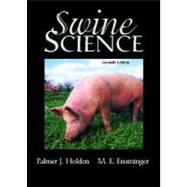The pork industry is changing rapidly. Selecting for desirable traits by mating superior animals is being replaced by searching for genes that affect those phenotypic traits. Marketing has transformed from buying stations procuring live pigs to direct producer shipments to packing plans with price-a based on carcass weight and merit. The farrow-to-finish farm is being replaced by specialized units operating only a portion of the production continuum and increased citizen interest in the quality of the environment and in the methods that livestock arc produced is evident.
Industry groups, such as the National Pork Board, and state pork organizations are responding with voluntary programs that ensure pork to the consumer is free of antibiotic residues; pork's eating and nutritional qualities are improved; pigs are produced under humane conditions; and swine operations are managed to maintain, and even enhance, the quality of the environment. The cooperation between pork commodity organizations and universities for research and education is at an all-time high as both try to maintain and grow programs with declining budgets.
As an agricultural industry we must be prepared to respond, and even lead, in growing a swine segment vital to the ability of agriculture to survive and grow. This requires knowledge of the issues facing livestock agriculture and working to develop enterprises allowing farm families to garner a profitable and satisfying lifestyle.
WHAT IS AHEAD FOR PORK?
As the pork industry changes, challenges and opportunities will emerge. Following are five of these that will interact to define pork production.
- A continuing trend toward fewer and larger farms. As expenses increase for all people, the same happens to farm families. The cost to feed, clothe, educate, and plan for retirement demands an increasing level of expenditure each year. To maintain a lifestyle requires an increase in income.
- Niche markets are growing and providing producers wishing to produce specialty pork products, such as "free range," organic, or "antibiotic-free," larger incomes per specialty pig marketed.Animal welfare issues will continue to direct production methods. I believe that the vase majority of producers know that the welfare of their charges is integral to the success of their operation. However, there are many cultural and ethical differences as to what constitutes the welfare of animals. Hopefully, sound science will be deferred to in directing regulations affecting production methods.
- Environmental issues will become more prevalent in guiding the conditions under which hogs are produced and the resulting manure and gases. National and state regulations are already dominant forces in livestock production.
- Feeding pigs specialized diets to produce pork with specific intrinsic characteristics, such as types of fatty acids and other healthful components is being studied.
Producers with the necessary vision will be able to compete and thrive. I hope this text will provide a sound base for educating people new to the industry, and be a valuable resource to current participants.
Palmer J. Holden
Ames, Iowa, 2004








